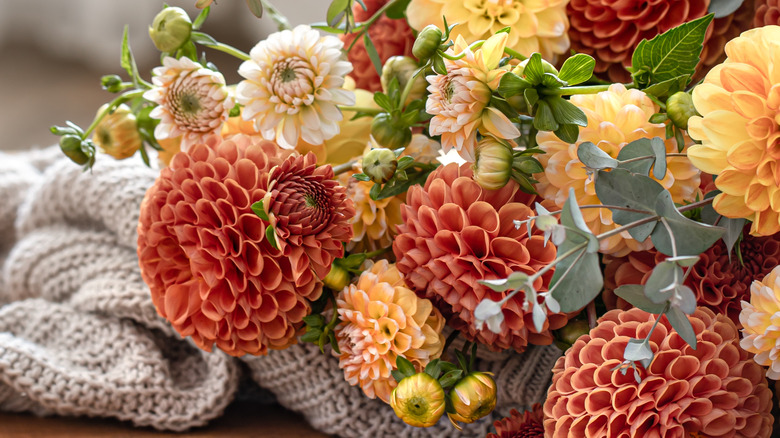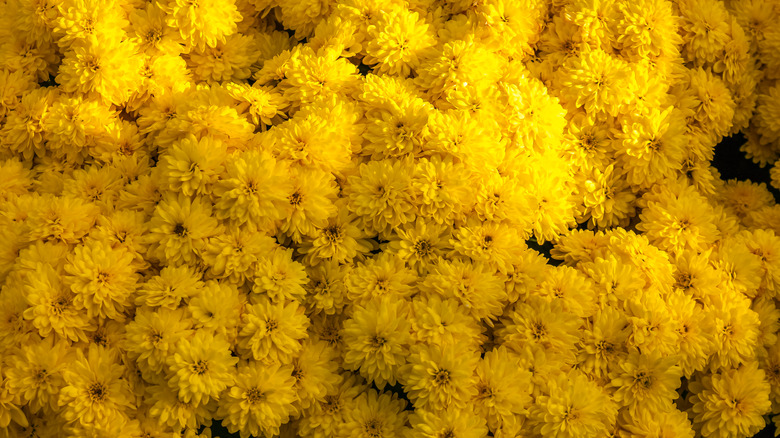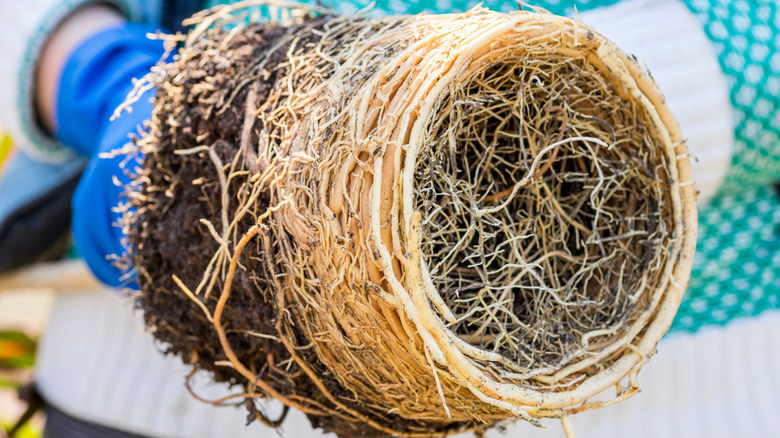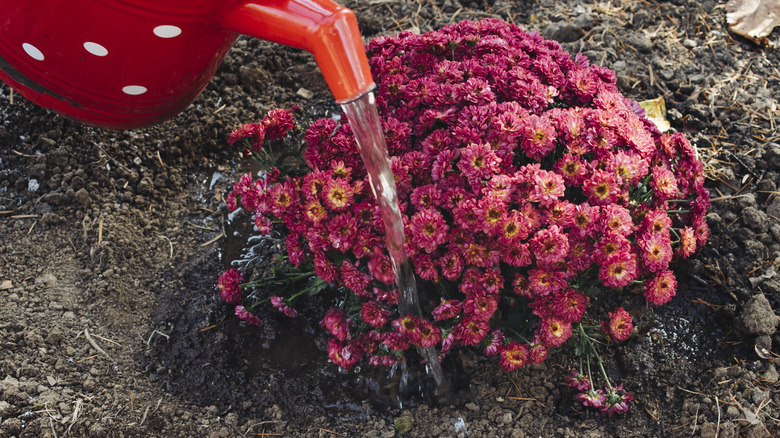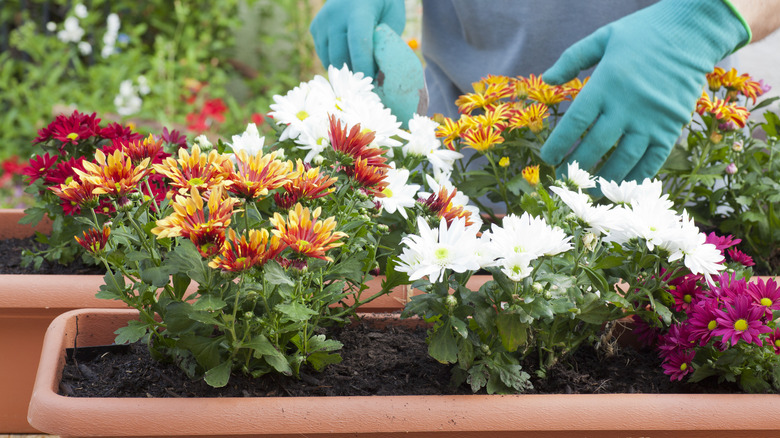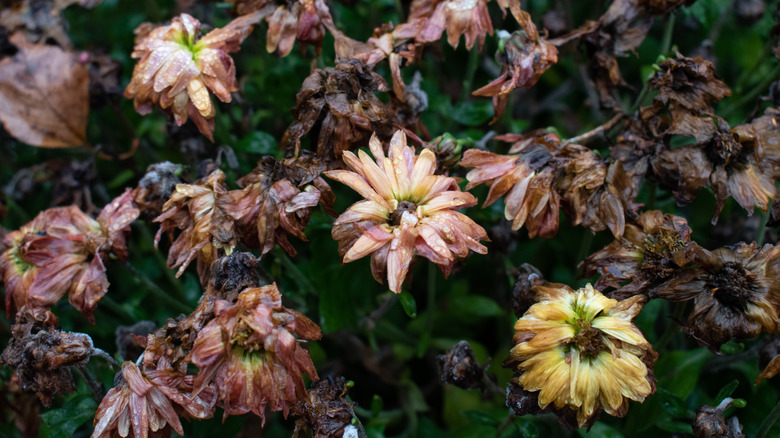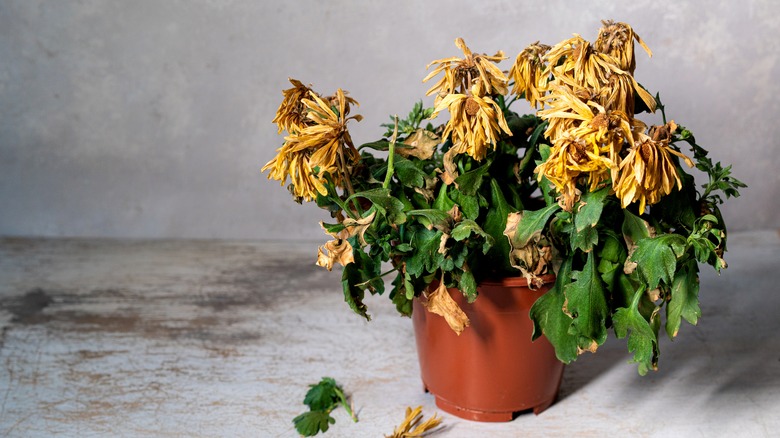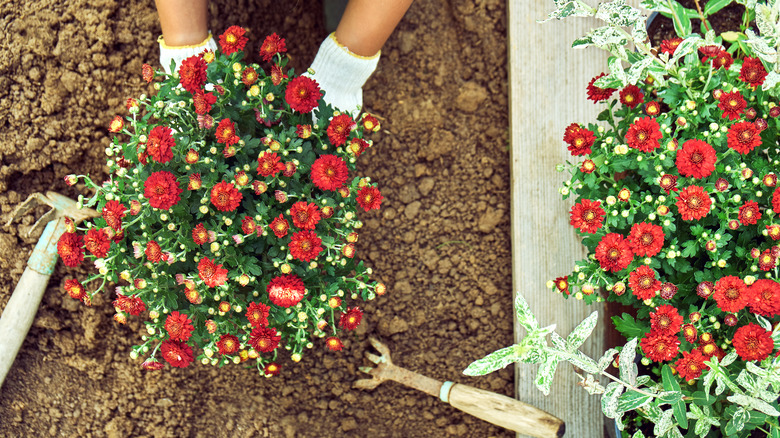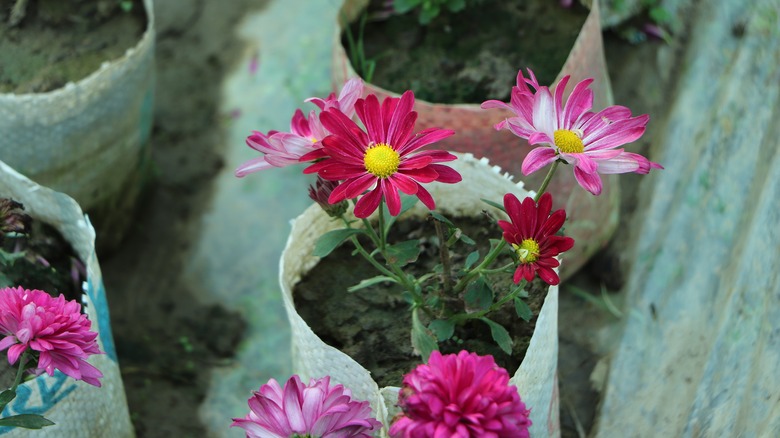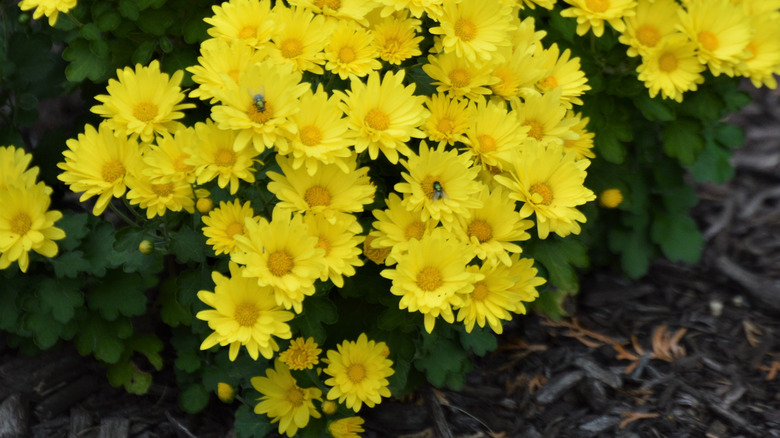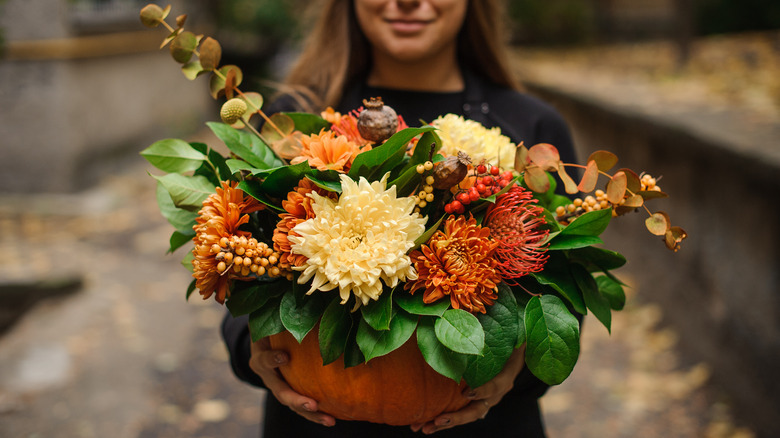10 Common Mistakes You May Be Making With Your Mums
Chrysanthemums, fondly shortened to just mums, are a seasonal fall favorite with colorful and hardy blooms. The University of Illinois Urbana-Champagne Extension describes the different mum shapes as buttons, daisies, cushions, decoratives, and pompons. So, there's a style to suit most every gardener's taste. With some know-how, mums are pretty easy to grow and can last the entire season, but they'll require some care and maintenance to continue to bloom.
The first mistake many people make when trying to enjoy a season full of potted mums is to forgo repotting the plants when you get them home from the store. Most store-bought potted mums are root bound, which means the roots have taken up so much of the pot that there's no space for the plant to grow. This leads to several issues that prevent the plant from flourishing.
According to the University of Massachusetts Amherst, a plant that has bound roots will be prone to disease and will exhibit wilted flowers and look nutrient deficient. To help prevent this distress on the plant, it's best to move it into a larger pot (at least 2 inches bigger) to give the roots room to stretch out and grow. Below are 10 additional mistakes to avoid when growing mums.
1. Not enough natural sunlight
Mums require a good deal of sun to really grow well. About four to six hours of direct, natural sunlight each day will encourage healthy, full blooming while increasing the hardiness of the plant.
2. No room to grow
Mums planted in a garden bed should always be spaced 18 inches apart to prevent overcrowding as they tend to grow upward and outward 3 feet. Spacing them too close to one another will likely cause root-system problems and for the plants to compete for nutrients.
3. Watering too much or too little
Mums prefer moist soil, so keeping them watered is important. One inch of water per week is a good guide. To check the moisture of the soil, place your finger up to the second knuckle into it. If there's sticky soil caked to your finger upon removal, don't water the plant. If there's some dry debris on your finger, it's OK to add water to the soil.
4. Using the wrong soil
Mums tend not to do well in soil with a pH above 7.0 (too alkaline); they bloom best in soil that's well-draining with a pH around 6.5. It's a good idea to buy a test kit and check the pH of your soil before planting mums.
5. Failing to deadhead
Deadheading simply means removing spent flowers and dying leaves from your plant in order to redirect its energy into new bloom growth. You can use your fingers to pinch off dead or dying bits or use scissors to cut it away.
6. Problems with drainage
A container that doesn't have adequate drainage holes is going to cause root rot in your plant. Likewise, soil that's dense and clay-like will also cause drainage issues, but this can be resolved by adding a loose potting mix to the soil. Another tip is to layer coffee filters on the bottom of the pot before adding soil to help with filtration and drainage.
7. Planting too late
Mums need to be planted in early spring once the last frost has occurred. Spring planting allows them time to grow strong roots that'll enable them to be hardy plants when they bloom in autumn.
8. Feeding too infrequently
Mums appreciate regular feeding every month with a 5-10-5 fertilizer. Nutrition is vital to a plant's growth and will help to ensure healthy, steady blooming all season-long. Be careful not to overfeed your mums; read the package directions carefully.
9. Forgetting to mulch
A 3- or 4-inch layer of mulch is sufficient around mums to prevent excessive weed growth and assist in maintaining soil moisture. Mulch also adds a completeness to the look of the garden.
10. Not enjoying them fully
You can just place a pot of mums on your front steps, but they love to be dressed up, too. Mums make excellent floral arrangements. They mix well with other flowers and fall décor, making it easy to find creative ways to display them around the house and garden.
